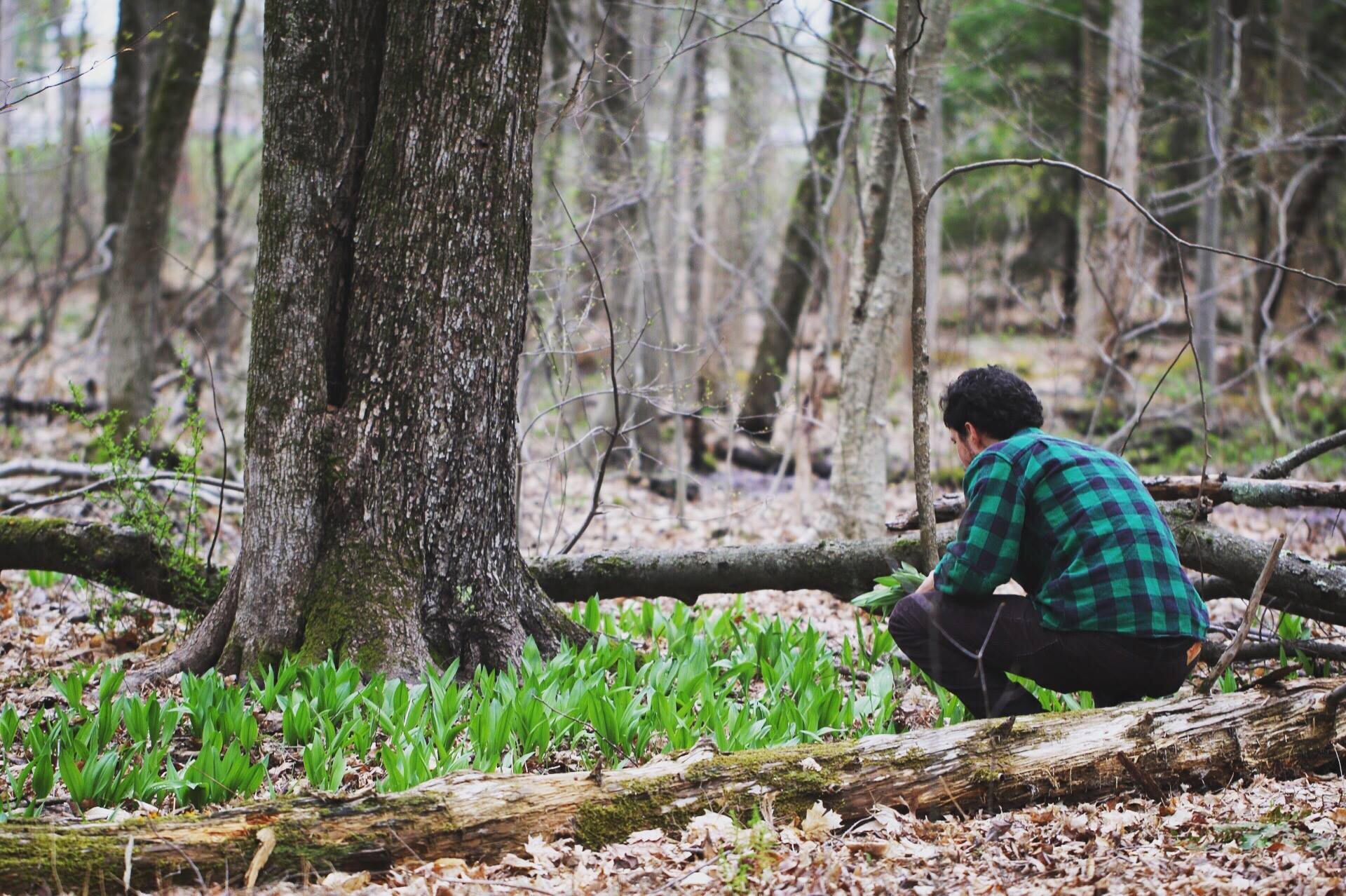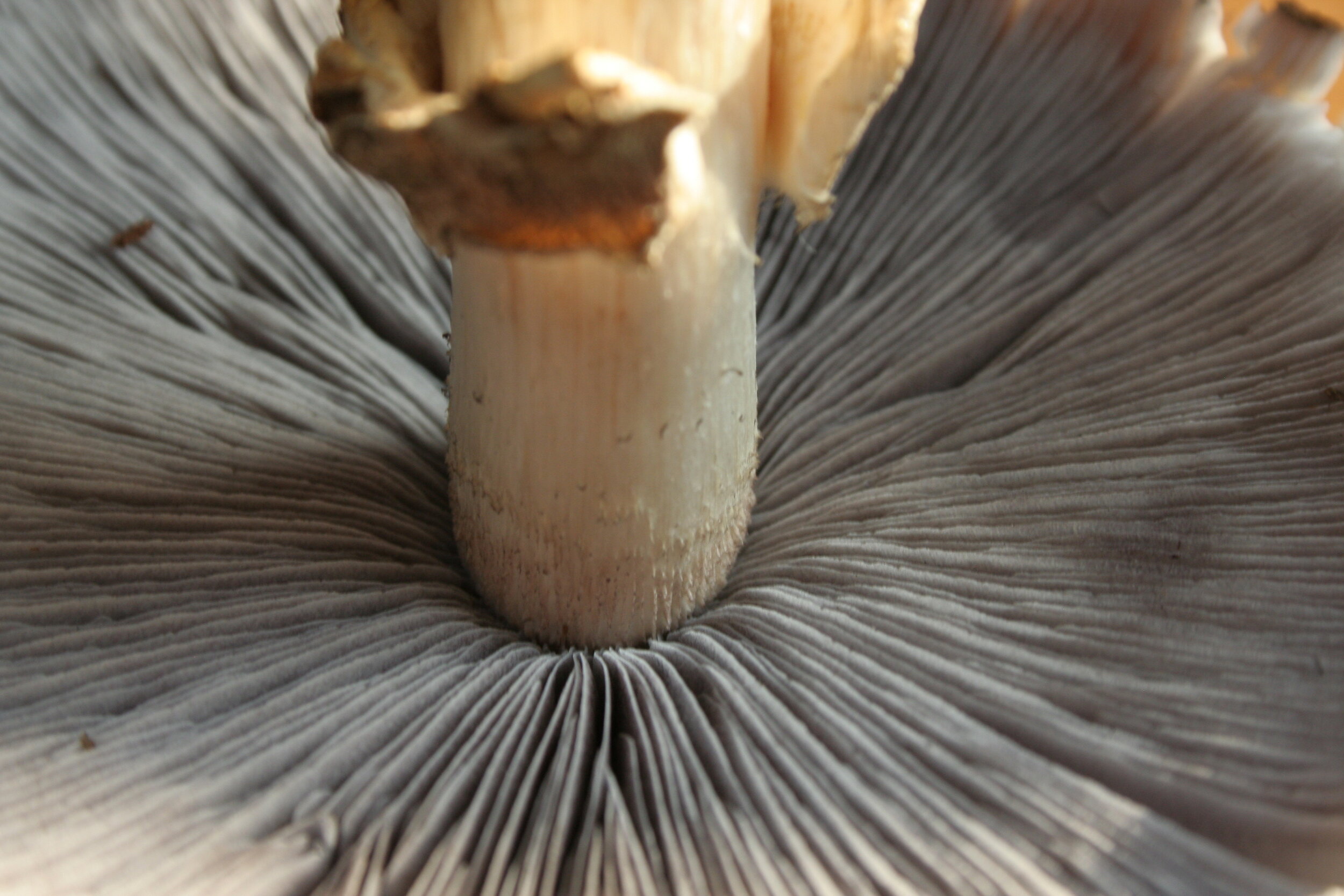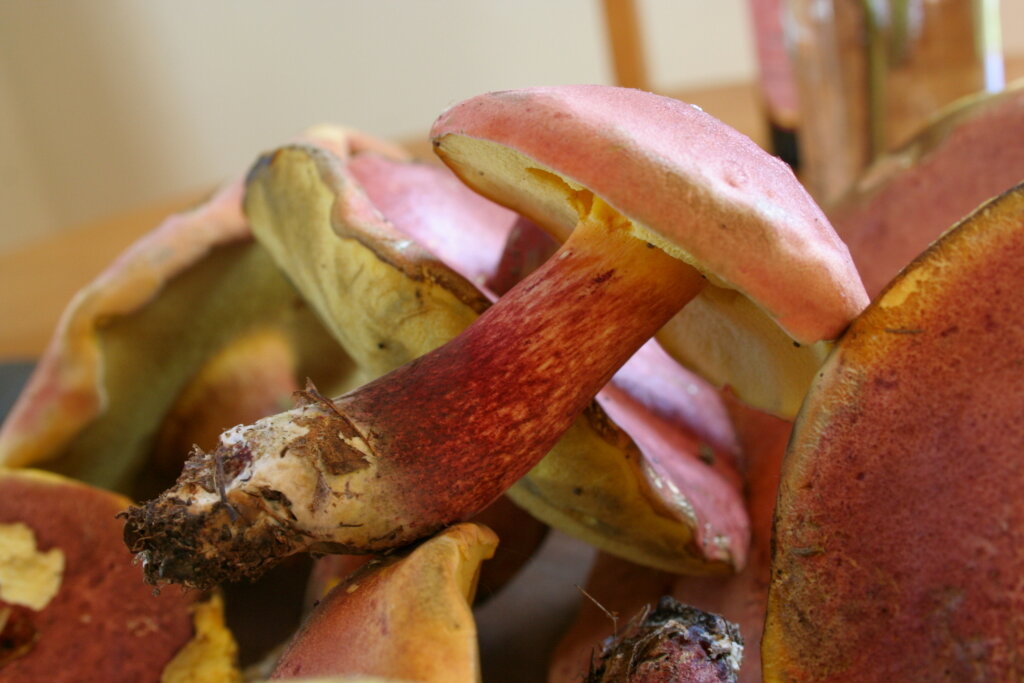
Blog
Morel Revelation
No matter how many morels one has found, the first find of the season is always a revelation. I’m making a pilgrimage to an old favorite ramp patch, following a trickling streambed up a craggy hillside of hickory, yellow birch, ash and beech. It still feels early for morels in northern Vermont’s hills and I’ve learned to pace myself, saving the epic hunts for peak conditions. But with the sweet smell of springtime in the air and the temperature pushing 80, I can’t help but slow down beneath a hefty ash tree that somehow feels just right for Morchella.
Summer Chanterelles
With wild strawberry and spearmint on my tongue, and chanterelles on my mind, I walk past the sun-splashed frog pond and into a dark glade of spruce. I’m back in familiar territory, having recently returned to northern Vermont after a stint in the southern Green Mountains.
The Ox Tongue on the Oak Tree
Like a crimson tongue shooting up from the scorched earth, scouring for moisture, the beefsteak polypore commanded my attention. Also called the ox tongue, the beefsteak (Fistulina hepatica) is a beguilingly beautiful polypore that I almost never find, let alone on a bone-dry August afternoon
Veins of Golden Chanterelles
The forest is flush with veins of gold that cut through dark hemlock stands and weave their way around towering spruce. A week of powerful afternoon thunderstorms broke the early July dry spell, receding to reveal a bumper crop of chanterelles flanked by porcini. Watch your step, because lobsters are lurking underfoot, and baby black trumpets are sprouting between the beech trees. The slugs have already arrived at the great woodland feast, and I invite you to join them!
Chanterelles, Boletes and their Brethren
It rains as I write, a good slow and steady soak that is sure to summon great flushes of gourmet and medicinal fungi. After a dry start to the summer season, golden chanterelles and boletes – from painted to porcini – are poking their familiar faces up from the warm July soil.
Morels in the Month of May
With only a sliver of sunlight left in the sky, I head for the hills in search of spring’s most coveted wild delicacy. Soon I find myself on hand and knee, scouring the soil beneath a giant ash as my setter howls madly into the twilight. I see a morel menagerie - plump and pickable blacks, yellows, and half-frees - in my mind’s eye, but my fingers find only leaf litter and hollowed acorns on the forest floor. I am hunting with my hands as much as my eyes, as the day grows dim and a silver crescent rises in the mid-May sky.
Falling into Maitake
After a rainy day at the office, I head straight for the woods to catch the last rays of daylight. It is already too dark to hunt, unless you know exactly where to look. Maitake is on my mind, and I am jumping from oak to oak in search of a hefty hen of the woods (Grifola frondosa).
Brimming with Boletes
Despite a prolonged dry spell, the woods are brimming with boletes. September mornings have found the forest heavy with river valley fog, and host trees are generously sharing groundwater with my favorite mycorrhizal fungi.
The Fall Hunt
After a dry August, punctuated by the occasional downpour, the foraging is hit-or-miss. Now is the time to head for the deep, dank belly of the forest and discover explosions of yellowfoot chanterelles and hedgehogs in mossy glens and bogs. Follow a streambed, or visit a vernal pool. Pursue pockets of moisture beneath the shelter of cliffs, gorges and waterfalls.
Primed for Porcini
Sauntering through a deep hemlock forest in the foothills of Camel’s Hump, I am scrambling to beat the slugs to June’s bumper crop of reishi. Chanterelle buttons glow on the soaking wet forest floor, the beginning of what should be a memorable July fruiting. Still, it will be at least a week before these golden beauties fatten up and find their way into an omelet.
Nettles Before the Storm
Wheezing uncontrollably in the pollen-laden air, I make a sunset run to the nearest nettle patch at the city’s edge. I park my car on the side of the dusty dirt road and enter the woods beneath cottonwood and box elder. I walk past sprawling patches of denuded ostrich ferns, crudely cut stumps deprived of the chance to unfurl. Located just beyond the urban fray, this patch of ferns falls victim to the tragedy of the commons each spring as commercial foragers make their rounds and leave no fiddlehead behind.
Back in the Ramp Patch
As I walked the woods today with family and friends, spring was everywhere. Northern Vermont’s soils, frozen five feet deep in March, are bursting with new growth. Thousands of trout lilies poked out of the saturated soil. Trilliums, already bearing white buds, brushed up against blue cohosh and tangy wood sorrel.
Mycelial Memories
Every October as the wild mushroom season nears its inevitable end, a feeling of desperation sets in as I scramble to get out and collect the last of the harvest. My approach to foraging, usually patient and calculated, becomes decidedly more frantic as I find myself sprinting from oak to oak, fueled by visions of a well-stocked larder. As I check each and every oak for a roosting hen, I envision Thanksgiving turkey stuffed with maitake and lion’s mane – the grandeur of the harvest illuminating the darkest days.
Fall Feast
With crispy autumn leaves underfoot and newly naked branches overhead, we took the little one to climb her first mountain. Winter is the longest season in Vermont, a sprawling and frigid affair, and autumn the most ephemeral. But when the leaves are peaking, and the harvest heavy, we are overwhelmed by abundance and undaunted by the coming cold.
Golden Hours
I’m eating black raspberries for breakfast, watching them turn from ruby red to a luscious purple as they ripen under the summer sun. Nothing summons memories of summers past like the blackcap – my favorite bramble. My tongue tingles as their zingy burst of flavor finishes with dark, mysterious cloves.
Morels, with a Side of Arsenic
This proud forager has a confession to make – the closest I’ve come to a morel this spring was inadvertently stepping on a lone Gyromitra esculenta. It was a gruesome site, too – the convoluted, wrinkly flesh squished like a false morel pancake on the ground.
blog archive by year:
















